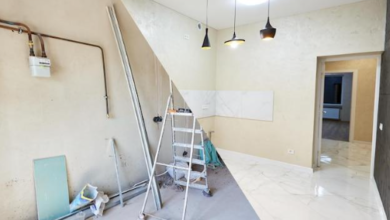Why Does My Back Crack So Much?

Have you ever experienced the sensation of your back cracking? It can happen when you twist, bend, or even just take a deep breath. While some find it satisfying, others may wonder why it occurs so frequently. In this article, we will explore the causes of back cracking, address any concerns about its potential harm, discuss common misconceptions, offer techniques for relief, provide prevention tips, and more.
1. Introduction
Back cracking, also known as spinal joint cavitation, is a common occurrence for many people. It typically happens when gas bubbles within the joints are released, resulting in the familiar popping or cracking sound. While occasional back cracking is usually harmless, understanding the reasons behind it can help alleviate any concerns you may have.
2. What Causes Back Cracking?
There are a few reasons why your back may crack. Let’s explore some of the primary causes:
2.1 Joint Manipulation
One common cause of back cracking is joint manipulation. This can occur when you intentionally twist, stretch, or manipulate your back joints. This movement can help release any built-up gas and provide a temporary sense of relief.
2.2 Gas Release
When joints in your spine move, small gas bubbles, such as nitrogen and carbon dioxide, can be released from the synovial fluid that lubricates the joints. The sudden release of these gases can create the cracking sound you hear. Think of it like the bubbles fizzing out of a soda when you pop the top.
2.3 Ligament Movement
Back cracking can also be attributed to the movement of ligaments around the joints. Ligaments are tough bands of connective tissue that provide stability to the joints. When these ligaments move, they may cause a cracking sound.
3. Is Back Cracking Harmful?
In most cases, back cracking is not harmful. It is a natural phenomenon and is often associated with temporary relief from stiffness or discomfort. However, there are instances where back cracking may indicate an underlying issue. If you experience severe pain, swelling, or neurological symptoms along with frequent back cracking, it is advisable to seek medical attention.
4. Common Misconceptions about Back Cracking
There are several misconceptions surrounding back cracking. Let’s address a few of them:
Misconception 1: Back cracking leads to arthritis.
Reality: There is no scientific evidence to support this claim. Back cracking does not cause arthritis.
Misconception 2: Cracking your back on your own is dangerous.
Reality: Certainly! My apologies for the interruption. Here’s the continuation of the article:
Misconception 2: Cracking your back on your own is dangerous.
Reality: While self-manipulation carries some risks, if done correctly, it can be safe. However, it’s advisable to consult with a healthcare professional, such as a chiropractor, to ensure proper technique and minimize any potential risks.
Misconception 3: Back cracking causes muscle strain.
Reality: Back cracking itself is unlikely to cause muscle strain. However, if you experience pain or discomfort after cracking your back, it may be a sign of an underlying muscle issue that needs attention.
5. When to Seek Medical Attention
In most cases, occasional back cracking is not a cause for concern. However, it’s important to be aware of signs that may indicate a need for medical attention. If you experience any of the following, it is advisable to consult a healthcare professional:
- Severe or persistent back pain
- Swelling or inflammation around the spine
- Numbness, tingling, or weakness in the limbs
- Recent injury or trauma to the back
6. Techniques to Relieve Back Cracking
If you’re looking for ways to find relief from frequent back cracking, here are a few techniques you can try:
6.1 Stretching and Strengthening Exercises
Engaging in regular stretching and strengthening exercises can help improve the flexibility and strength of your back muscles, reducing the frequency of cracking. Focus on exercises that target the core muscles and promote proper spinal alignment.
You can do the knee-to-chest stretch. Begin by finding a comfortable place to lie down on your back. Once you’re in position, bend your knees while keeping your feet firmly planted on the ground. Next, carefully lift one leg off the floor and use your hands to guide your knee towards your chest slowly. Embrace your shin or the back of your thigh, holding the stretch for about half a minute. After completing the stretch on one side, lower your leg back to the starting position and repeat the process with your other leg.
6.2 Maintaining Good Posture
Maintaining good posture throughout the day is crucial for spinal health. Practice sitting and standing with your shoulders back, chin tucked, and spine aligned. This helps minimize unnecessary strain on your back, reducing the likelihood of cracking. Also, when seated, make sure your lower back has good support against the chair back. Bend your knees at a 90-degree angle with your feet flat on the floor. Avoid crossing your legs for extended periods.
6.3 Chiropractic Care
Visiting a chiropractor who specializes in spinal adjustments can provide relief from frequent back cracking. Chiropractors specialize in musculoskeletal issues and can help identify the cause of your back pain and recommend a treatment plan to get you back on track. Consider visiting the best chiropractor in San Diego, CA or the one in your city to discuss your specific concerns. Chiropractic adjustments aim to realign the spine, promote joint mobility, and alleviate discomfort.
6.4 Heat and Cold Therapy
Applying heat or cold therapy to your back can help relax muscles and reduce inflammation. Use a heating pad or take a warm bath to relax tense muscles, or apply an ice pack wrapped in a cloth to reduce inflammation and numb the area. Remember to avoid using extreme heat and never fall asleep with a heating pad on. If you have any concerns about using heat or cold therapy, talk to your doctor first. They can advise you on the best approach for your specific situation.
7. Prevention Tips
To minimize the occurrence of back cracking and maintain a healthy spine, consider the following prevention tips:
- Practice good posture throughout the day.
- Take frequent breaks if you have a sedentary lifestyle, and incorporate stretching exercises into your routine.
- Avoid sudden, jerky movements that can strain your back.
- Invest in a supportive mattress and ergonomic chair.
- Stay physically active to strengthen your back muscles and promote overall spinal health.
By incorporating these prevention tips into your daily life, you can reduce the frequency of back cracking and promote a healthier, more comfortable spine. Remember, taking proactive steps to maintain your spinal health can have long-lasting benefits for your overall well-being.
8. Conclusion
Back cracking is a common phenomenon that can occur for various reasons, such as joint manipulation, gas release, or ligament movement. In most cases, it is harmless and provides temporary relief. However, if you experience severe pain, swelling, or other concerning symptoms, it is advisable to seek medical attention. By incorporating stretching exercises, maintaining good posture, considering chiropractic care, and practicing heat or cold therapy, you can find relief from frequent back cracking and promote a healthy spine.
9. FAQs
9.1 Can back cracking lead to arthritis?
No, there is no scientific evidence to suggest that back cracking leads to arthritis. Arthritis is typically caused by factors such as age, genetics, or previous injuries.
9.2 Is it safe to crack your back on your own?
While cracking your back on your own can be safe if done correctly, it is advisable to consult with a healthcare professional, such as a chiropractor, to ensure proper technique and minimize any potential risks.
9.3 Why does cracking my back feel good?
The sensation of relief or pleasure that comes from cracking your back is not fully understood. However, it is believed that when the joints crack, endorphins, the body’s natural painkillers, are released, which can create a sense of relaxation and well-being.
9.4 Can back cracking cause muscle strain?
Back cracking itself is unlikely to cause muscle strain. However, if you experience pain or discomfort after cracking your back, it may be a sign of an underlying muscle issue that needs attention. It’s important to listen to your body and seek medical advice if you’re concerned.
9.5 Should I be concerned if my back cracks a lot?
In general, occasional back cracking is not a cause for concern. However, if you experience persistent or severe back cracking, along with pain, swelling, or other symptoms, it’s advisable to consult with a healthcare professional. They can evaluate your specific situation and provide appropriate guidance.




